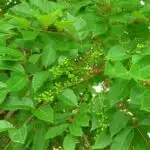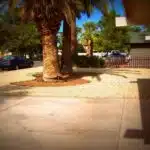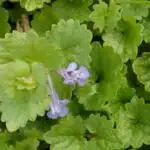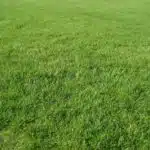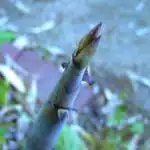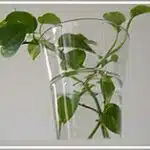Ivy, a popular ornamental plant, can often become an invasive species and wreak havoc on gardens and landscapes. Its fast-growing nature allows it to quickly spread across large areas, choking out other plants and creating a dense thicket that is difficult to manage. Despite its aesthetic appeal, ivy poses numerous challenges for gardeners and landscapers alike.
Killing ivy can be a daunting task, as it requires persistence and the use of effective techniques. This article aims to provide practical advice on how to eliminate ivy from your garden or landscape, highlighting various methods that have been proven to be effective. Whether you are dealing with English ivy, poison ivy or other types of ivy, this article will equip you with the knowledge needed to tackle this tough plant once and for all.
Understanding The Characteristics Of Ivy
Ivy, also known as Hedera helix, is a common plant that can be found in many regions of the world. It is known for its long vines and glossy leaves that can grow up to 100 feet in length. There are over 400 species of ivy, each with its own unique characteristics.
Identifying species of ivy is important when it comes to controlling its growth. English ivy, for example, has dark green leaves with lighter veins while Boston ivy has serrated leaves that turn red in the fall. By recognizing these differences, you can better understand how to manage the specific type of ivy growing on your property.
Recognizing growth patterns is also crucial when dealing with an infestation of ivy. Ivy typically grows vertically and horizontally using aerial roots to attach itself to surfaces like walls and trees. It can smother and kill other plants by blocking out sunlight and taking up nutrients from the soil. Understanding how ivy grows will help you determine the best approach to take when trying to remove it from your property.
Understanding the characteristics of ivy is just the first step in managing an infestation. Next, you must assess the extent of the infestation to determine how much work needs to be done.
Assessing The Extent Of The Infestation
According to a recent study by the National Park Service, ivy is one of the most invasive plants in North America. It’s known for its ability to spread quickly and choke out native vegetation, causing significant damage to ecosystems. Before attempting to remove ivy, it’s important to assess the extent of the infestation to determine the best course of action.
Measuring damage caused by ivy is an essential first step in assessing its extent. Ivy can cause structural damage to buildings and other man-made structures as well as trees and other vegetation. In addition, it can harbor pests that can further harm plants or animals in the area. By taking stock of any visible signs of damage caused by ivy, you’ll be able to develop a more comprehensive plan for removal and restoration.
Identifying types of ivy is also important when assessing its extent. There are several different species of ivy that are commonly found in North America, including English ivy, Boston ivy, and poison ivy. Each species requires a different approach for removal and poses varied levels of risk to humans and animals during removal. By correctly identifying the type(s) of ivy present in your area, you’ll be better equipped to select appropriate tools and techniques for safe and effective removal.
- Look for signs of structural damage caused by ivy on buildings or trees.
- Check for any presence of pests or disease associated with the infestation.
- Use a field guide or online resource to identify which species(s) are present in your area.
Assessing the extent of an ivy infestation is crucial before taking steps toward removal. Measuring damage caused by the plant as well as identifying which species are present will help ensure safe and effective removal while minimizing harm to surrounding vegetation or wildlife. Once you have assessed these factors, you can move on to selecting the right time for removal without risking further damage or spreading seeds from mature plants.
Choosing The Right Time For Removal
The best seasons to remove ivy depend on the type of ivy you are dealing with. If you are dealing with English or Algerian ivy, it is best to remove them in the fall or winter when they are not actively growing. This is because these types of ivy have a tendency to cling tightly to surfaces and can easily damage the things they grow on if removed during their active growth period.
On the other hand, if you are dealing with poison ivy, it is best to remove it during the early summer when it is actively growing but before it has produced berries. This is because poison ivy produces a resin called urushiol which can cause an allergic reaction if it comes into contact with your skin. Removing poison ivy before it produces berries reduces the risk of spreading this resin.
It is also important to consider weather conditions when removing ivy. Avoid removing ivy during periods of drought or extreme heat, as this can stress both you and the plant. Instead, choose a cool day after a rainfall, as moist soil will make it easier for you to pull out roots and stems without breaking them. By carefully selecting the right season and weather conditions for removal, you increase your chances of successfully removing ivy from your property without causing undue stress on yourself or the environment around you.
Transition: Now that we have discussed how to choose the right time for removal, let’s take a look at some effective manual removal methods that can help get rid of unwanted ivy once and for all.
Manual Removal Methods
After identifying the right time for ivy removal, it is important to consider the various manual methods available. While herbicides are effective at killing ivy, they may also harm other plants and animals in the vicinity. Therefore, alternative methods such as manual removal may be more suitable.
One popular method of manual ivy removal involves pulling the vines off trees or structures by hand. This method works best when the ivy has not yet grown thick stems and roots that are difficult to remove. Another option is cutting the vines at their base and allowing them to dry out completely before removing them from the area. Safety precautions should be taken when handling ivy as it can cause skin irritation and allergic reactions.
When using manual removal methods, it is important to be thorough in your efforts. Ivy can easily grow back if even a small portion of the plant remains, so all parts of the plant must be removed completely. In addition, it is important to dispose of all plant material properly to prevent any regrowth or spread of the plant. Overall, with proper safety precautions and attention to detail, manual removal can be an effective way to kill and remove ivy from your property.
Next section topic: Cutting and Pruning Techniques
Cutting And Pruning Techniques
Cutting ivy involves using sharp gardening shears to trim the vines and stems to the desired shape and size. Pruning is a more extensive form of cutting that requires removing entire branches or stems to promote a healthy and attractive form. Root removal is an effective way of killing ivy, as it eliminates any remaining energy sources to the plant. Chemical control is another method of killing ivy, as some herbicides are specifically designed to target it. Mowing and mulching are two ways of controlling ivy growth, as they cut the top of the plant off and block sunlight respectively. Solarization, foliar spraying, trimming, smothering, boiling water, pulling, digging, vines removal, and stump grinding are all additional techniques used to kill ivy.
Cutting
To effectively kill ivy, cutting is one of the most common and practical techniques. However, it is crucial to use sharpened tools to ensure clean cuts and prevent damage to surrounding plants. Pruning shears or loppers are ideal for cutting small or young ivy stems, while a pruning saw is recommended for thicker and older stems.
After making the cuts, it is important to dispose of the ivy properly. Avoid leaving the cuttings on the ground as they may re-root and continue to grow. Instead, place them in a yard waste bin or bag and dispose of them according to local regulations. If burning is allowed in your area, you may also consider burning the cuttings.
When cutting ivy, keep in mind that it can be a persistent plant that requires repeated cutting over time for complete eradication. Regular maintenance with proper sharpening tools and disposal methods will help prevent regrowth and control its spread. By utilizing this technique, you can effectively manage ivy growth in your garden or landscape.
Pruning
Cutting and pruning techniques are essential for managing the growth of ivy in your garden or landscape. While cutting involves using sharpened tools to remove the stems, pruning is a technique used to shape and maintain the plant’s size and appearance. Pruning helps improve the overall health of the ivy by promoting new growth and removing dead or damaged branches.
It is important to use proper tools for pruning to ensure clean cuts and prevent damage to the plant. Secateurs or hand pruners are ideal for small stems up to 2cm in diameter, while loppers are recommended for thicker stems up to 4cm in diameter. A pruning saw may be necessary for larger branches that require more forceful cutting. Common mistakes in pruning include making improper cuts, cutting too much of the plant, or not considering the plant’s natural growth pattern.
When pruning ivy, it is best to start by removing any dead or diseased branches before shaping the plant’s overall size and appearance. Begin by trimming back any overgrowth that may be encroaching on other plants or structures. Be sure not to cut into old wood as this can lead to decay and disease. Regular maintenance with proper pruning techniques will help promote healthy growth and prevent unwanted spread.
Root Removal
Effective cutting and pruning techniques are crucial for maintaining the health and aesthetic appeal of ivy in your garden. While proper pruning can promote fresh growth and remove damaged branches, root removal is another essential practice that should not be overlooked. Root pruning is a technique used to control the spread of ivy by removing unwanted roots without disturbing the plant’s overall growth.
Root pruning involves carefully digging around the plant’s base to identify and remove any excess roots. This process helps promote healthy growth by providing more room for oxygen, water, and nutrients to reach the remaining roots. Additionally, soil sterilization may be necessary to eradicate any harmful bacteria or fungi that could infect the roots.
Before root pruning, it is important to consider the type of ivy you have as some species have more extensive root systems than others. Careful planning and execution are required to ensure that only excess roots are removed while preserving healthy ones. Done correctly, root pruning combined with regular cutting and pruning can help maintain a flourishing ivy while preventing it from overtaking your garden or landscape.
Digging Up The Roots
To completely remove ivy from an area, it is important to dig up the roots. This can be a challenging task, as ivy roots can be deep and extensive. One effective way to begin is by using root removal tools such as a shovel or a pickaxe. These tools can help break up the soil around the roots, making it easier to remove them.
When digging up the roots, it is important to cover any exposed soil with mulch or other ground cover. This will help prevent new growth of ivy or other unwanted plants in the future. Additionally, covering the soil can help retain moisture and nutrients, which will benefit any desired plants that may be in the area.
Digging up ivy roots can be a time-consuming process, but it is essential for complete removal of this invasive plant. Once all visible roots have been removed, it is important to monitor the area for any regrowth and continue to remove any new growth promptly. If regrowth persists or if there are areas where digging is impractical or impossible, chemical herbicides may need to be used as a further step in removing ivy from an area.
Using Chemical Herbicides
After digging up the roots, you may still find some stubborn ivy that refuses to die. In this case, using chemical herbicides can be an effective solution. However, before applying any herbicide, it is important to consider its safety and proper application techniques.
Herbicide safety should always be a top priority when dealing with toxic chemicals. Always wear protective clothing such as gloves, long-sleeved shirts, pants, and eye protection when handling herbicides. Also, make sure to read and follow all instructions on the label carefully to avoid accidents or exposure to harmful chemicals.
When applying herbicides to ivy, it is important to use the correct technique for maximum effectiveness. Herbicides are most effective when applied during the plant’s active growing season. Spray the herbicide directly onto the ivy leaves until they are wet but not dripping. Avoid spraying on windy days or near other plants that may unintentionally come into contact with the herbicide.
While chemical herbicides can be effective at killing ivy, there are also eco-friendly alternatives available that are safer for both humans and the environment. These include pulling out the ivy by hand or using a natural weed killer such as vinegar or boiling water. Consider these options before turning to harsh chemicals as a last resort.
Eco-Friendly Alternatives To Chemicals
When it comes to killing ivy, many people turn to chemical herbicides as a quick and easy solution. However, these chemicals can have negative impacts on the environment and can harm beneficial plants and animals. Fortunately, there are eco-friendly herbicides available that can effectively kill ivy without harming the environment.
One such option is vinegar. Vinegar has acetic acid, which is effective at killing weeds and can be used to kill ivy as well. Simply mix vinegar with water in a spray bottle and apply it directly to the ivy leaves. This method may take a few applications over several days to fully kill the ivy, but it is an effective and safe alternative to chemical herbicides.
Another DIY removal technique is manual removal using gloves and pruning shears or a saw. This method involves cutting away the ivy stems near the ground level and then removing as much of the root system as possible. While this method may be more time-consuming than using herbicides, it is an effective way to remove ivy without harming other plants or animals in the area.
By using eco-friendly herbicides or manual removal techniques, you can effectively kill ivy without harming the environment. These methods may require more effort than using chemical herbicides, but they are safer for both humans and wildlife. In order to prevent regrowth of ivy, there are additional steps you can take after removing it from your yard or garden area.
Preventing Ivy Regrowth
Eco-Friendly Alternatives to Chemicals are a great way to keep your garden green and healthy without resorting to harsh chemicals. However, if you have an overgrown ivy problem, you may need to take more drastic measures. Killing ivy is a difficult task that requires patience, persistence, and the right tools.
The first step in killing ivy is to cut it back as much as possible. This will expose the root system and make it easier to remove. Once the ivy has been cut back, dig up the roots using a shovel or mattock. Be sure to remove all of the roots, as even small pieces can regrow.
After removing the ivy, prevent regrowth by using mulching techniques and ground cover alternatives. Mulching with organic materials such as leaves or bark can help suppress weed growth and retain moisture in the soil. Ground covers like clover or periwinkle can provide attractive alternatives to bare earth while also helping to prevent weeds from growing back.
Moving onto Preventing Ivy Regrowth, removing ivy from trees and structures is another challenging task that requires careful attention. Avoid physically pulling ivy off of surfaces like brick or wood as this can damage the surface underneath. Instead, use pruning shears or a saw to cut through vines near their base and then gently pull them away from the surface they are attached to. With patience and persistence, you can successfully remove ivy from your garden without harming other plants or relying on harsh chemicals.
Removing Ivy From Trees And Structures
The sight of ivy creeping up a tree or structure can be both mesmerizing and worrying. While it adds a certain aesthetic appeal to the surroundings, it can also cause severe damage to the host plant or architecture. Ivy plants are notorious for their invasive nature, as they attach themselves firmly to any surface with their strong root-like structures. They not only compete for nutrients with the host plant but also cover the bark, which can lead to decay and death of the tree if left unchecked.
To remove ivy from trees, one must first ensure that the tree is protected during the process. Cutting off vines from trees can harm them severely, especially if done incorrectly. It is recommended to start by cutting off as much of the vine as possible at ground level and then pulling it away manually from the trunk and branches. In case some parts remain attached, it is advisable to wait until they die before removing them completely. Special care must be taken while handling cut stems or leaves as they may contain allergens that can cause skin irritation.
Ivy growing on structures like walls or fences can cause structural damage over time due to its weight and moisture retention properties. The best way to remove ivy in such cases is by cutting it at its base with pruning shears or a saw and then pulling it away from the structure carefully. Any leftover roots or remnants should be scraped away using a stiff brush or scraper. Regular maintenance checks should be carried out to ensure that any regrowth is caught early on and removed promptly before causing further damage.
With ivy removed from trees and structures, one still needs to deal with poison ivy if present in the area. Poison ivy is another species of ivy that causes severe allergic reactions in humans upon contact with its leaves or roots. The next section will focus on how to safely remove poison ivy without causing harm to oneself or others nearby.
Dealing With Poison Ivy
Poison ivy is a notorious plant that causes skin irritation and itching to those who come into contact with it. Identifying symptoms of poison ivy can be challenging since they may not appear immediately after exposure. Symptoms include redness, swelling, blisters, and intense itching. In severe cases, individuals may experience difficulty breathing or swallowing.
Treating poison ivy involves managing the symptoms and preventing further exposure to the plant. For mild cases, over-the-counter creams such as calamine lotion can help soothe the irritation and alleviate itching. Oral antihistamines can also provide relief from itching. However, for severe cases or if the rash has spread extensively over the body, medical attention should be sought.
To prevent further exposure to poison ivy, it’s essential to identify areas where the plant is present. Poison ivy typically grows in wooded areas or along fences, walls, or buildings. Wearing protective clothing such as long sleeves and pants can also help reduce exposure while outdoors.
- Apply cool compresses – Applying cool compresses on affected areas can help reduce inflammation and discomfort.
- Use oatmeal bath – Taking an oatmeal bath can help soothe the skin irritation caused by poison ivy.
- Keep skin clean and dry – Keeping affected areas clean and dry can prevent infection from bacteria entering through open blisters.
Protecting yourself during removal is crucial to avoid further exposure to poison ivy. Understanding how to identify poison ivy is essential when removing it from your property or garden. The next section will discuss practical steps on how to remove poison ivy safely without causing harm to yourself or others around you.
Protecting Yourself During Removal
- It is essential to wear protective clothing and gear when attempting to remove ivy as it can be an aggressive and irritating plant to manage.
- The best tools to use when removing ivy are a pruning shear, lopper, or long-handled rake to reach any branches or vines that have grown up into trees.
- For harder-to-reach areas, a chainsaw or brushcutter can be used for larger areas, though appropriate safety gear should always be worn.
- For smaller areas, a garden hoe is effective for removing the top layer of ivy and the roots can then be pulled out with a pair of gloves.
Wear Protective Gear
When it comes to removing ivy, safety should be your top priority. Choosing appropriate gear is crucial in protecting yourself during removal. A pair of sturdy gloves will protect your hands from the sharp edges of ivy leaves, while long-sleeved shirts and pants will shield your skin from allergic reactions and cuts.
It is important to wear protective gear during ivy removal because the plant contains a toxic oil that can cause severe skin irritation and even blisters. Inhaling the dust or smoke from burning ivy can also cause respiratory problems. Therefore, wearing a face mask or respirator is recommended to prevent inhaling any irritants.
In addition to wearing appropriate gear, it’s important to follow other safety precautions during ivy removal. Avoid touching your face or eyes with gloved hands, as the toxic oil can easily transfer onto your skin. Also, make sure to properly dispose of any removed ivy and wash your clothes immediately after removal. By taking these steps, you can ensure a safe and effective ivy removal process.
Tools For Removal
Protecting yourself during ivy removal is crucial to ensure your safety. Apart from wearing appropriate gear, using the right tools also plays a significant role in preventing accidents and injuries. There are two types of tools that you can use for ivy removal: handheld and power tools.
Handheld tools include pruners, loppers, and shears. They are ideal for removing small patches of ivy or cutting back vines that have grown too long. Handheld tools are also more affordable compared to power tools, making them a practical choice for homeowners who want to remove ivy on their own.
On the other hand, power tools such as chainsaws and brush cutters are best suited for removing large areas of ivy or thick vines. They can significantly reduce the time and effort required for removal, but they come at a higher cost than handheld tools. When using power tools, it’s important to follow safety precautions such as wearing ear protection and eye goggles.
In conclusion, choosing the right tool for ivy removal depends on several factors such as the size of the area and your budget. Whether you opt for handheld or power tools, always prioritize safety by wearing appropriate gear and following proper procedures while using the equipment. By doing so, you can achieve a successful outcome without putting yourself at risk of injury or health hazards.
Disposing Of Ivy Waste
One may argue that disposing of ivy waste is a daunting task. After all, it can be difficult to find a proper way to dispose of such an invasive and persistent plant. However, with the right approach, disposing of ivy waste can be both easy and environmentally friendly.
One option for disposing of ivy waste is to compost it. Ivy leaves and stems are rich in nutrients and make excellent compost material. However, it is important to ensure that the ivy has not been treated with any chemicals before adding it to the compost pile. Composting ivy waste not only helps reduce landfill waste but also provides a nutrient-rich soil amendment for future gardening endeavors.
Another option for repurposing ivy waste is to use it as mulch or ground cover in landscaping projects. When properly prepared, ivy can be used as a natural weed barrier or as a decorative element in garden beds. Ivy waste can also be used as fuel for wood-burning stoves or fireplaces.
As we have seen, there are several options available for disposing of ivy waste. Whether you choose to compost it, use it as mulch or ground cover, or repurpose it in other ways, there are many benefits to keeping this pesky plant out of landfills and putting its nutrient-rich properties to good use. In the next section, we will discuss when hiring professional help may be necessary in tackling an overgrown ivy problem.
Hiring Professional Help
Disposing of ivy waste is just the beginning when it comes to ridding your landscape of this pervasive plant. Killing ivy can be a daunting task, especially when dealing with large areas or mature plants. While some homeowners may attempt to tackle the job themselves, hiring professional help can save time and frustration.
One factor to consider when deciding whether to hire a professional is the cost. While it may seem like a significant expense upfront, the long-term benefits of having an ivy-free landscape can outweigh the initial investment. Additionally, many companies offer free consultations and estimates, so homeowners can get an idea of what they’ll be paying before committing to any services.
When searching for a reputable company to handle your ivy problem, there are several things to keep in mind. Look for businesses that are licensed and insured, as well as those with positive reviews and testimonials from previous customers. It’s also important to ask about their methods for removing ivy and any guarantees they offer for their work. By doing your research and choosing a trustworthy company, you can feel confident that your ivy problem is in good hands.
Transition: While hiring a professional can take care of your current ivy issue, maintaining an ivy-free landscape requires ongoing attention and effort.
Maintaining A Ivy-Free Landscape
Maintaining an Ivy-Free Landscape
Ivy, with its attractive appearance and ease of growth, may seem like a desirable addition to your landscape. However, once it establishes itself, it can quickly become invasive and difficult to remove. If you’re looking to maintain an ivy-free landscape, here are some tips to consider.
Firstly, mulching is an effective method for controlling ivy growth. Mulching involves covering the soil surface around plants with a layer of organic material such as leaves or wood chips. This helps to smother the ivy and prevent it from taking root in the soil. Additionally, mulch can help retain moisture and improve soil health.
Secondly, consider using ground cover alternatives instead of ivy. There are many options available that provide similar benefits without the invasive tendencies of ivy. Some examples include creeping thyme, lamb’s ear, and sedum. These plants are low-growing and spread quickly to form a dense mat that can help control weeds while adding aesthetic appeal to your landscape.
Lastly, regular maintenance is key to keeping ivy at bay. This includes pulling up any new growth as soon as it appears and regularly clearing out any debris or dead plant material that could provide a foothold for new growth. With consistent effort over time, you can successfully maintain an ivy-free landscape.
- Mulching methods: Covering the soil surface around plants with organic material such as leaves or wood chips.
- Ground cover alternatives: Using low-growing plants such as creeping thyme or lamb’s ear instead of ivy.
- Regular maintenance: Clearing out debris and dead plant material regularly while pulling up any new growth as soon as it appears.
By utilizing these methods along with regular maintenance practices, you can successfully maintain an attractive and healthy landscape free from invasive ivy growth. Remember that prevention is key when dealing with invasive species – always be on the lookout for signs of new growth and take action as soon as possible. With a little bit of effort, you can enjoy the benefits of a beautiful and ivy-free landscape for years to come.
Conclusion
The persistence of ivy growth can be frustrating for many homeowners, but with the right techniques and timing, it is possible to remove it completely. Understanding the characteristics of ivy and assessing the extent of the infestation are critical steps to ensure successful removal. Manual removal methods such as cutting and pruning are effective for small areas, while hiring professional help may be necessary in larger infestations.
It is important to protect oneself during ivy removal due to its potential toxicity, and proper disposal of waste is crucial in preventing reinfestation. Maintaining a ivy-free landscape requires ongoing effort and attention, but it ultimately leads to a healthier environment for both plants and humans alike. As horticulturists say, removing ivy is like pulling out weeds from a garden bed; it takes patience and diligence but yields a beautiful end result.
Image Credits
- “Ivy reads in bed” by Richard Masoner / Cyclelicious (featured)



